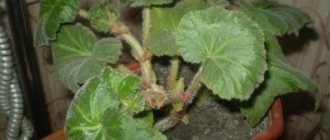The tree peony is a spectacular plant that can grow up to two meters and live at the planting site for up to a hundred years, and bloom for up to fifty. But he doesn’t favor the transplant. Therefore, you need to initially plant it correctly and properly care for it.
The list of procedures required for a tree peony includes watering and loosening the soil, feeding the plant, treating against infections, pruning and covering for the winter. And if you strictly follow all the recommendations, then achieving a decorative appearance and lush flowering from tree peonies is not at all difficult. However, you will have to be patient and take into account the fact that your outdoor pet will not grow as quickly as you would like, and it may not begin to bloom immediately.
This group of peonies is called tree-like because of its appearance: these plants are distinguished by thick, few-branched, erect perennial shoots.
Planting a tree peony
The tree peony feels best in an area with light partial shade, without drafts or scorching sun. The plant also has certain requirements for soil. There should be no stagnation of moisture in it, it should be rich in humus and have a neutral (perhaps slightly alkaline) reaction.
Most gardeners agree that the ideal time to plant peonies is from the second half of August to the end of September. However, there are those who allow planting in May-April. In this case, it is advisable to deepen the root a little.
Before the procedure, be sure to inspect the rhizome of the seedling. It should be healthy looking, without damage or rotten places. If there are any, carefully cut them down to healthy tissue, and treat the sections with charcoal or activated carbon.
If you get a seedling with a closed root system, pay attention to its above-ground part (it should be healthy), as well as the soil (should not have signs of waterlogging and mold).
A peony seedling with an open root system needs more careful preparation before planting. You must first straighten its roots and soak them for 20-30 minutes in Heteroauxin, Kornevin, KorneStim or any other root formation stimulator.
The planting pit for the tree peony is prepared several days before the event. It should be 60-70 cm deep and three times the width of the planting pot. About 20-30 cm from the depth of the hole should be allocated for drainage (expanded clay, gravel, broken brick, etc.). Since the tree peony tends to grow well in width, when planting several plants, the distance between them is left at least 1.5 m.
It is important to observe the planting parameters as accurately as possible. The root collar and renewal buds should be below the soil level. If the root system of the seedling is closed, planting is carried out together with a clod of earth. After placing the seedling in the hole, the voids between the rhizome and the edges are tightly filled with earth, then the plant is watered abundantly and mulched (using humus or compost).
Dilute heavy clay soil with sand and organic fertilizers, add 200-300 g of lime to acidic soil. Light sandy soil can be improved with humus, lowland peat and turf soil. Also add 30-40 g of superphosphate and 15-20 g of potassium sulfate to the soil.
- When and how to plant a tree peony
The second half of August and all of September is the most favorable time for planting a tree peony. We'll show you how to do it correctly.
Botanical description and history of breeding
The tree peony belongs to the genus Paeonia of the Peony family; it is a perennial deciduous shrub. Stems are erect, woody, light brown in color. The shoots do not die off and produce annual growth. The bush is hemispherical in shape. The leaves are green, dissected, and turn purple towards the end of the growing season. Flowering dates depend on the variety, usually in May. Flowers with a diameter of 20-22 cm are simple and double. Their range includes many shades of pink, red, lilac, yellow, and white. There are two-color varieties. The photo shows how thickly the flowers cover the bush.
There are 30-80 flowers on one bush. The petals are dense, corrugated, with many yellow stamens. Flowering time is 10-14 days; cool weather and lack of direct rays at midday extend this period. The star-shaped fruit opens at the seam when ripe. Inside are black shiny seeds. It bears fruit from the age of four. With good care in a warm climate, the height of the bush is 1.7-2 m, but in central Russia peonies do not grow higher than 1.5 m.
History of the plant
The history of selection of tree peonies dates back to Ancient China. The first description of the varieties was made in 1034. The largest collections of plants are collected in Luoyang. In Chinese monasteries there are old bushes up to 2.4 m high, with a shoot diameter of 10 cm. Japan creates its own varieties of peony, and in this country flowers are associated with the arrival of spring. Tree peonies came to Russia in the 18th century and were cultivated in greenhouses. Only in the middle of the 20th century did flowers settle in open ground.
Feeding tree peony
When applying fertilizers to the planting hole in the first two years, additional fertilizing is not required for the plants. Subsequently, tree peonies are fed four times a season.
When young red shoots emerge from the soil . For feeding use 1 tbsp. ammonium nitrate or urea dissolved in 10 liters of water, and pour this volume under each bush. After this, the soil is mulched with humus.
Immediately after the buds appear . For this, 1/2 tbsp. ammonium nitrate, 1/2 tbsp. superphosphate and 1/3 tbsp. Potassium salt is mixed, scattered under the bush and carefully embedded in the soil.
- How to feed peonies in spring for lush flowering
Thanks to these fertilizers, peonies will bloom profusely and for a long time.
During peony flowering, repeat the previous feeding or add 1-2 cups of wood ash under each bush.
Immediately after the bush has finished flowering . Add 1 tbsp under the bush. superphosphate and 1 tbsp. potassium salt.
Plant propagation
This type of peony reproduces in many ways. Let's look at a few of the most popular and easy ones.
Dividing the bush
Self-rooted peonies are propagated in this way. But it can be used starting from the age of 5-6 years. The best months for breeding are mid-August and September.
The separated seedling should have young roots up to approximately 20 cm and 2-3 renewal buds. If the plant is healthy, it will have large and juicy buds.
The cut areas are treated with tree ash.
Layerings
This is also a very simple method of propagation.
- First you need to take a developed shoot and make a small cut along it.
- Treat the wound area with root.
- Pin the shoot to the ground with something, for example, a bracket.
- Place a layer of soil on top.
- The layering site must be constantly kept moist. Water regularly so that it takes root.
Cuttings
Propagation by green cuttings is very effective, but the wait for flowering will be long.
Cuttings are prepared in the summer until August. They are cut early in the morning. You need to leave 2 buds on each part. An oblique cut is made under the bottom one, and the leaves underneath are torn off.
Seedlings need to be placed in root solution for a day.
It is necessary to plant in the shade in soil with the addition of peat and sand, while burying the lower bud into the ground. The soil needs to be moistened regularly and the cuttings need to be sprayed. It is advisable to keep the plant in a greenhouse.
They accustom the peony to fresh air gradually, removing the greenhouse from time to time. Planting in a permanent place is carried out next year in spring or autumn.
Treatment of tree peony from diseases and pests
Like other flower crops, tree peony is susceptible to some infections, most of which can be saved from with a timely and adequate response. Here are the main ones.
Gray rot . Brown spots with a wet gray coating appear around the stem near the root collar, as well as on the leaves. Young shoots wither, and over time the plant itself withers. To combat the disease, the drugs Chistotsvet, Skor, Diskor, Maxim and others are used. As a preventive measure, spraying with 1% Bordeaux mixture is carried out in the spring. For winter, the stems of the plant are cut short.
Rust . The leaves of a diseased plant become covered with spots-pads of brown, orange or reddish color. The disease spreads quickly by wind and spreads to other plants. If a disease is detected, infected parts of the plant must be immediately removed, and the bushes themselves must be treated with Fitosporin-M (according to the instructions for roses), Pure Flower Bau, Abiga-Peak.
Powdery mildew . A characteristic white or grayish coating appears on the leaves, resembling scattered flour. Affected leaves become deformed and dry out. You can fight the disease with the help of fungicides such as Fitosporin-M, Rakurs, Chistotsvet Bau, Chistotsvet, Alirin-B and others.
Verticillium wilt occurs when peonies begin to wither leaves and flowers during flowering. There is no cure for this disease: diseased plants will have to be destroyed. As a preventive measure, use the drug Healthy Soil, watering the soil with it during the growing season of plants (according to the instructions).
Ring spot (mosaic) and other types of spots. Yellow spots or stripes appear on peony leaves, usually in the form of rings or half rings. Over time, they may become brown in color. Plant growth stops, flowering ability is reduced. There are no drugs against this disease; infected plants will have to be uprooted and destroyed. As a preventive measure, experts recommend fighting pests that contribute to the occurrence of spotting.
Thrips and aphids are small insects that suck the sap from the plant. May be of different colors. Fitoverm, Iskra, Imidor, Tanrek, Tsvetolyuks Bau, Inta-Vir, Fufanon-Nova and other insecticides will help in the fight against them.
Ants contribute to the appearance of aphids on plants, but they are also dangerous for peonies in themselves, since they eat their petals and leaves. You can defeat ants using drugs such as Barguzin, Muraviin and Grom-2.
- Diseases and pests of peonies: photos, description and treatment
What diseases and pests are peonies most afraid of and how to protect these plants from major misfortunes?
Own-rooted and grafted peonies
Tree peonies, based on the root, are divided into two types: rooted and grafted. Each of them has its own differences and subtleties.
With proper care, the root type of peonies lives for quite a long time (up to 20 years). It propagates easily by dividing bushes and is resistant to disease and winter cold.
But the plant also has its drawbacks. This type of tree peony blooms 5 years after planting. It develops slowly over the first 5 years. During this time, peonies grow to 60-70 cm.
The advantage of grafted peonies is rapid flowering. This is what they are grown for. In some cases, they can bloom even in the first year of planting. In addition, grafted peonies grow very quickly (up to 50 cm per year).
The big disadvantage of this plant is its fragility. It also cannot be propagated by dividing bushes; it does not tolerate transplantation well.
This type is formed by grafting a tree peony onto an herbaceous one.
It is very easy to distinguish these two species. When purchasing seedlings, pay attention to the root. Self-rooted peonies have many small thin roots of light brown color. But grafted peonies have thick roots.
You can plant two types of tree peonies at the same time. Thus, while some plants decorate the garden with their lush blooms, others will gradually develop.
Tree peony pruning
The procedure begins from the second year of the plant’s life. Pruning the tree peony promotes the formation of the bush, and subsequently more luxuriant and long-lasting flowering. The event is carried out either in the spring (before the buds open) or in the fall (approximately after the first frost).
Spring pruning of tree peonies differs from autumn pruning. In the first case, only old and weak shoots are shortened so that they do not take away the strength of the plant that is about to bloom. In the second, the bush is slightly rejuvenated to stimulate the appearance of new shoots and flowering.
Peonies over 10 years old are often completely pruned to the stump. This is also done for the purpose of rejuvenation. It is even better to dig up the plants at the same time as this pruning and divide them so that each resulting part of the plant has 3-4 buds. Typically this procedure is carried out in August.
Immediately after wilting, even before the petals fall, faded buds should be removed so as not to provoke the development of diseases. The appearance of large upper flowers is stimulated by removing the side buds when they reach the size of a pea.
- 5 secrets of lush peony flowering from a specialist
A specialist agronomist and consultant for the popular magazine “Flower” shares tips on how to properly care for peonies.
What is the difference between Chinese and Japanese tree peonies?
The bulk of seedlings for our country are produced by the Chinese and Japanese. As a result, two groups of varieties appeared - Chinese and Japanese.
Chinese peonies reproduce by division and layering. As a rule, they are rooted, but sometimes they are grafted onto the roots of tree peonies. These varieties can grow up to 2 m in height, as the catalogs promise. They are considered unpretentious. They have huge double flowers with a pleasant scent.
For the “Chinese” to show their best qualities, at least three years must pass.
Japanese peonies are propagated by grafting onto peony tubers. Such a seedling will bloom in the first year after purchase. But how it will behave further depends on how capable this variety is of root formation. There are varieties that immediately grow their roots, so the following seasons bloom poorly. And there are those that develop on grassy roots, but do not want to grow their own roots.
Seedlings from Japan are easily recognized by their thick black rhizome, reminiscent of a tuber. The flowers of these peonies come in different colors and sizes, even scarlet and dark burgundy, which are rare among the “Chinese”.
How do tree and herbaceous peonies reproduce?
More than 10,000 varieties of these flowers are known in the world. Peonies have several methods of reproduction. Each of the varieties is usually classified into 2 general groups:
- Tree-like
- Herbaceous
The latter are more popular because some of their subspecies can grow in almost all climatic conditions. However, all herbaceous plants are divided into 3 subgroups, based on the origin of peonies. They are:
- Botanical (characteristic of varieties growing in wild conditions)
- Chinese (these include all bushes that were originally bred in this country)
- Hybrid (this is the name given to those varieties that were obtained by crossing several species and were later cultivated in summer cottages and in botanical gardens)
Reproduction of peonies
Herbaceous peonies are usually propagated using:
- Trimming
- Root cuttings
- Stem cuttings
- Layers
- Semyan
- Air layering
Peonies that grow in Southwestern China are called tree peonies. The height of the bushes can exceed 2 m, while the buds are smaller than those of herbaceous varieties. However, in recent years they have begun to be cultivated in our country. All tree peonies are also classified into the following subgroups:
- Japanese (they are characterized by medium-sized buds)
- Sino-European (their distinctive features: a wide palette of pink shades, as well as large inflorescences)
- Hybrid (they are characterized by yellow bud colors)
Tree peony
Tree peonies can be propagated using:
- Semyan
- Layers
- Green shoots
- Rhizome divisions
- Vaccinations
Tree peony: care in autumn and preparation for winter
Autumn care of a tree peony comes down to digging up the trunk circle (60-80 cm in diameter) at a depth of 10-13 cm. You can remove the top layer from above and pour sand into which to plant small-bulbous flowers (anemone, kandyk, crocus, muscari, scilla, scylla). They bloom in early spring and decorate their wintering grounds with their flowers.
Transplantation and propagation
Read about transplanting a tree peony in the fall and propagation in a separate material at the end of the page.
Preparing for winter: necessary or not?
Is it necessary to prune a tree peony in the fall for the winter?
Experts do not recommend pruning tree varieties in the fall. It is better to do it in the spring. More details in the chapter – “Pruning”.
Winter shelter for tree peony
When is it better to replant peonies: in spring or autumn?
In order to understand when it is better to replant plants, it is necessary to take into account a number of important factors:
- Weather
- Climate of the area of residence
- Acid and mineral composition of the soil
- The concentration of impurities in the liquid used for irrigation
In general, experts identify the following optimal timing:
- From August 20 to September 18 (for residents of the Urals and Siberia)
- From August 20 to September 23 (for the Moscow Region and central regions of Russia)
- From September 1 to September 28 (for Ukraine, the Caucasus and southern regions)
Transplanting peonies
However, if there is a need to replant peony bushes in the spring, a number of rules must be followed:
- The optimal period is the first 10 days after the snow has completely melted.
- It is important to use plenty of liquid for the plant
- To protect peonies, you need to feed them with wood ash or other organic preparations.
Reproduction of tree and herbaceous peonies by dividing the bush, stem cuttings: technology
The most popular methods of propagating peonies are: dividing the bush, as well as using stem cuttings. However, these technologies for both varieties are somewhat different. For example, to propagate herbaceous peonies using stem cuttings, you must follow the following instructions:
- 2 weeks before the plant begins to flower, in the first half of the day you should cut off a flowering strong shoot near the root
- The cut area should be sprinkled with wood charcoal
- The upper part of the shoot is cut off and 10 cuttings are left.
- Next, the cut part must be planted in moist greenhouse soil, making a depression of about 5 cm in it.
- It should also be remembered that the planting process requires the correct location of the seedling. In this case, the prepared shoot must be planted end to bottom
- For 14 days, the seedling is watered with a small amount of liquid, and the greenhouse is ventilated for about 20 minutes. 2 times a day
- After the first 2 weeks, the greenhouse is opened for a longer period, but only if the shoot has managed to take root
- Before the winter period, the foliage is cut off from the bush
Reproduction of peonies
When using this method for propagating tree peonies, you must adhere to the following sequence:
- In the second half of July, it is necessary to select and cut off a semi-lignified shoot with a leaf
- The greens must be cut in half, and the cuttings should be planted 2 cm deep in moist soil.
- The seedling is regularly monitored: watered, sprayed with liquid from a spray bottle, and also kept warm
- On the 20th of September, each seedling is transferred to a separate container
- In spring, rooted peonies are transplanted into the garden.
It is noteworthy that the propagation of tree and herbaceous peonies can be carried out using one method. To do this, you must follow the following instructions:
- Plants must be dug, visually opening 8-10 cm of the root system
- Using a sharpened shovel, you need to cut the root horizontally
- The severed part is inspected: shoots that are too long, dry areas, and not entirely healthy roots are removed.
- The root is divided into small bundles
- If it is necessary to separate any pieces of the root system, they should be disinfected using clay by placing these parts in the diluted mixture for 30 minutes. before planting
- Root shoots of peonies are added to moist garden soil, covered with a moderate amount of charcoal and cared for regularly.
- After 1-2 years, the bushes will take root and begin to bloom.
Below is a diagram of how to properly plant a peony in the ground.
Proper planting of peonies in the ground
Tree peony: planting and care in the Moscow region, pruning after flowering
The tree peony, the planting and care of which is described in detail in our article, is very popular among gardeners due to its longevity and unpretentiousness. Let's look at how to propagate shrubs yourself, and what conditions need to be created for the crop to grow and bloom abundantly.
Robinia (lat. Robinia pseudoacacia)
Robinia or pseudoacacia is a drought-resistant tree that loves plenty of sunlight. Long-term waterlogging is detrimental - the tops dry out. Do not lift the root collar above the soil, but do not bury it either. Optimally - at surface level.
The homeland of the tree peony (lat. Paeonia suffruticosa) is China. In central Russia, gardeners actively grow tree peonies; planting and caring for them does not cause any particular difficulties. And with the right choice of variety and following the rules of watering and fertilizing, you can enjoy magnificent flowering for a long time.











